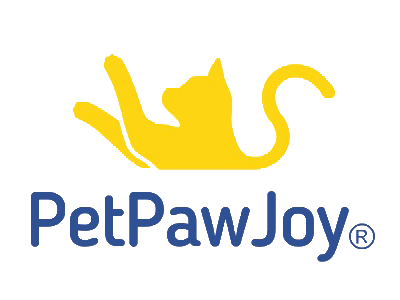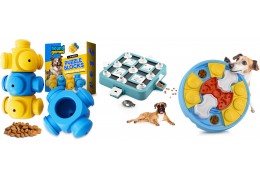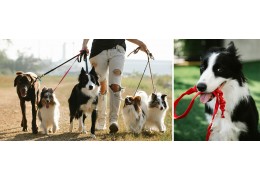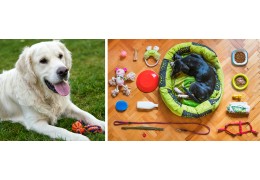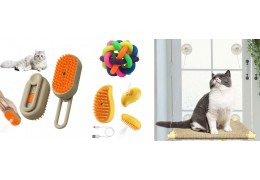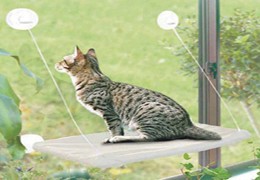Choosing the right small pet carrier is essential for your pet’s safety and comfort during travel. This guide...
How to Groom a Nervous Dog: Tips to Reduce Anxiety
Grooming is an essential part of keeping your dog healthy, but for nervous dogs, it can be a stressful experience. Many pet owners struggle with anxious behavior during grooming sessions, making the process difficult for both the dog and the owner. Fortunately, using the right dog grooming tools, investing in high-quality pet grooming tools for dogs, and providing a stable surface like a big dog grooming table can help reduce anxiety and make grooming a more positive experience.
Understanding the reasons behind your dog’s nervousness and applying calming techniques can transform grooming from a stressful chore into a bonding experience. In this guide, we’ll explore practical tips to make grooming easier for nervous dogs while ensuring their health and comfort.
Why Some Dogs Fear Grooming
Before addressing how to calm a nervous dog, it’s important to understand why grooming can be anxiety-inducing. Common reasons include:
• Negative Past Experiences: A bad grooming experience, such as a painful nail trim or a loud hair clipper, can cause long-term fear.
• Sensitivity to Touch: Some dogs dislike being handled in certain areas, such as their paws or ears.
• Noise Sensitivity: Clippers, dryers, and even running water can be overwhelming for anxious dogs.
• Lack of Early Exposure: Puppies that were not introduced to grooming at a young age may find it unfamiliar and frightening.
• Separation Anxiety: Being away from their owner in a grooming salon or restrained on a big dog grooming table can trigger anxiety.
Identifying the root cause of your dog’s fear is the first step in addressing it.
Tips for Grooming a Nervous Dog
1. Choose the Right Grooming Tools
Using the right dog grooming tools is crucial for reducing stress during grooming. The wrong tools can cause discomfort, making your dog even more resistant to the process.
Essential Pet Grooming Tools for Dogs
• Soft-Bristle Brushes – Gentle on the skin, ideal for sensitive dogs.
• Quiet Electric Clippers – Low-noise clippers reduce fear from loud buzzing sounds.
• Nail Grinders vs. Clippers – Some dogs tolerate grinding better than cutting.
• Ear Cleaning Wipes – Less invasive than liquid ear cleaners.
Investing in high-quality pet grooming tools for dogs ensures a smoother, more comfortable experience for your pet.
2. Use a Big Dog Grooming Table for Stability
For large breeds, a big dog grooming table provides a secure, elevated surface, preventing unnecessary movement and reducing anxiety.
Why a Grooming Table Helps
• Better Control – Prevents your dog from squirming or jumping.
• Comfortable Positioning – Reduces strain on your back while keeping your dog at a proper height.
• Non-Slip Surface – Ensures safety, preventing slipping or sliding.
Using a big dog grooming table helps create a structured environment, making your dog feel more secure during grooming sessions.
3. Gradual Desensitization
If your dog is terrified of grooming, introduce the process slowly.
• Start with Short Sessions – Begin by handling your dog’s paws, ears, and fur for just a few seconds a day.
• Introduce Tools Gradually – Let your dog sniff and inspect the dog grooming tools before using them.
• Use Positive Reinforcement – Reward with treats and praise after each successful interaction with grooming tools.
Patience is key when working with nervous dogs. Gradual exposure helps build trust over time.
4. Create a Calm Environment
The grooming environment plays a huge role in reducing anxiety.
• Choose a Quiet Space – Avoid loud or busy areas that may add to your dog’s stress.
• Play Calming Music – Soft background music can help soothe nervous dogs.
• Use Aromatherapy – Some dogs respond well to lavender or chamomile scents.
A peaceful environment helps your dog associate grooming with relaxation rather than fear.
5. Keep Grooming Sessions Short
For highly anxious dogs, long grooming sessions can be overwhelming.
• Break Grooming into Small Steps – Instead of grooming all at once, divide tasks into separate sessions.
• Watch for Stress Signals – If your dog starts panting excessively or trying to escape, take a break.
• End on a Positive Note – Always finish with a treat or play session to create a positive association.
Short, positive grooming experiences help build your dog’s tolerance over time.
6. Use Distraction Techniques
Keeping your dog distracted can make grooming easier.
• Give a Lick Mat with Peanut Butter – Keeps your dog occupied while you brush or trim.
• Provide a Favorite Toy – Chewing on a toy can help reduce anxiety.
• Try Gentle Massage – Light massage before grooming can relax tense muscles.
Distractions help shift your dog’s focus away from the grooming process.
7. Nail Trimming Without Stress
Nail trimming is one of the most challenging parts of grooming for nervous dogs. Using the sharpest dog nail clippers makes the process quicker and less stressful.
Tips for Anxiety-Free Nail Trimming
• Trim One Nail at a Time – If your dog is fearful, trim just one nail per session and gradually increase.
• Use a Nail Grinder Instead of Clippers – Some dogs tolerate the gentle grinding motion better.
• Reward with High-Value Treats – Make nail trimming a positive experience by rewarding generously.
A good pair of sharpest dog nail clippers ensures clean cuts, reducing the risk of cracking or splitting.
8. Seek Professional Help When Needed
If your dog remains extremely anxious despite your efforts, consider professional help.
• Work with a Professional Groomer – Some groomers specialize in handling nervous dogs.
• Consult a Veterinarian – In severe cases, anxiety medications may help.
• Try Professional Training – A dog behaviorist can help desensitize your pet to grooming.
Professional guidance can make a significant difference for dogs with extreme grooming anxiety.
Final Thoughts
Grooming a nervous dog requires patience, the right approach, and proper pet grooming tools for dogs. Investing in high-quality dog grooming tools, using a big dog grooming table, and following calming techniques can turn a stressful experience into a positive one.
By understanding your dog’s fears and gradually building their confidence, you can create a grooming routine that is both effective and enjoyable. With time and consistency, even the most anxious dog can learn to tolerate, and even enjoy, grooming sessions.
